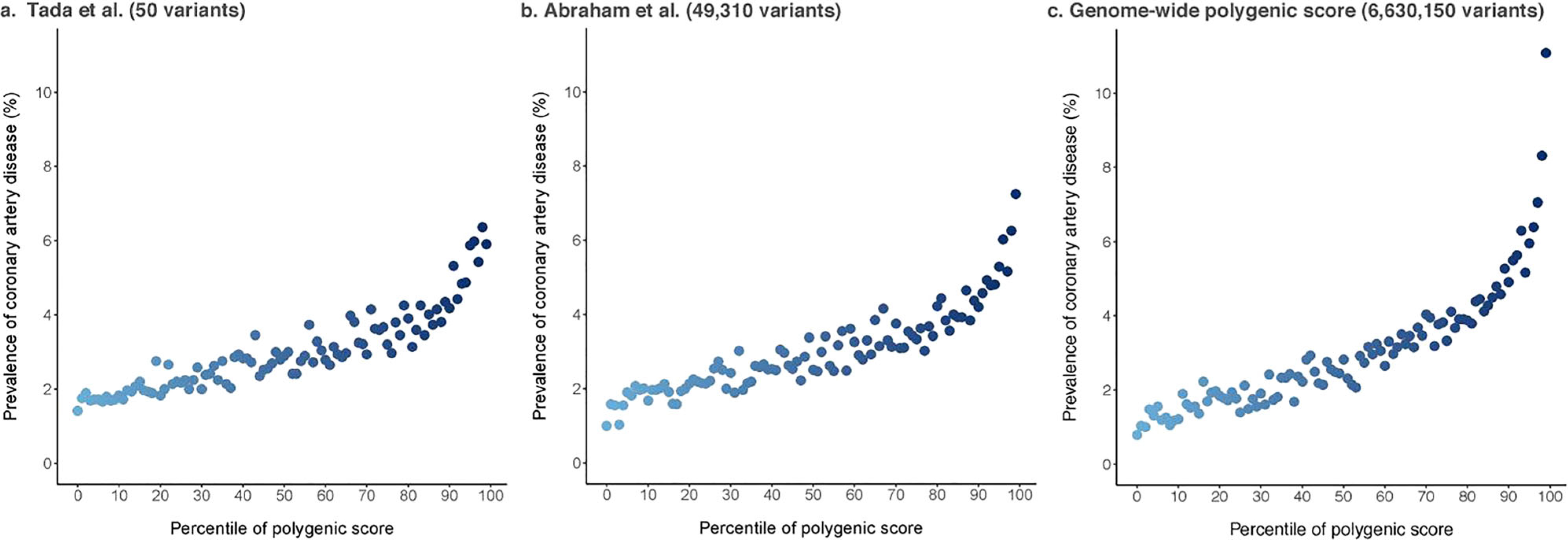Fig. 1.

Genomic polygenic risk for coronary artery disease. Three polygenic scores for coronary artery disease were calculated in the UK Biobank (n = 288,978) including 50 (panel a), 49,310 (panel b), and 6,630,150 (panel c) variants. As millions of variants enter a genomic polygenic score, the shape of the risk curve does not change, but a few individuals at relatively high risk of coronary heart disease begin to emerge. While these few additional individuals may be targeted for intervention to reduce risk, sophisticated genomic polygenic scores cannot be expected to improve T2D risk model performance overall (adapted by permission from Springer Nature from Khera et al. Nature Genetics. 2018;50(9):1219–24) [26]
